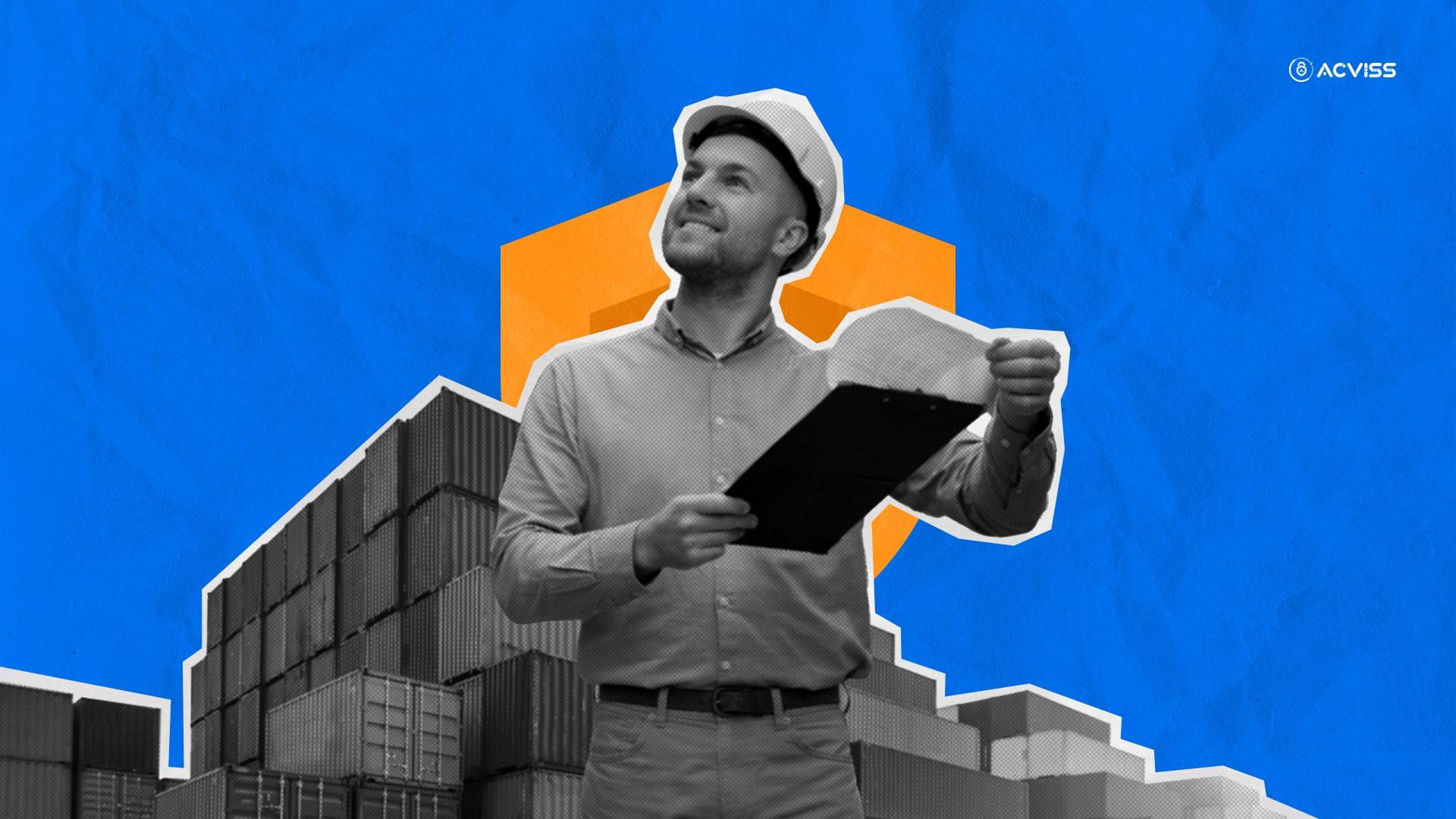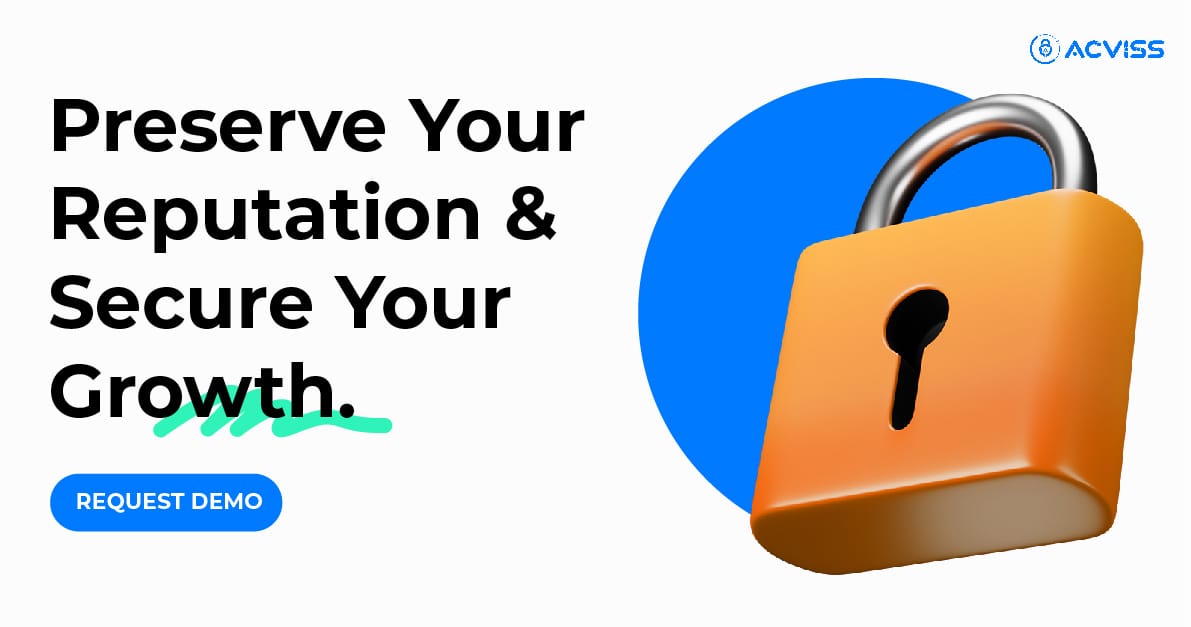How Technology Enabled Supply Chain Forecasting Prevents Fraud and Exploitation

In the high-stakes world of global trade, foresight is power and running a supply chain without forecasting is like sailing a ship in a storm without a compass. Supply chains today aren’t just logistics pipelines; they’re complex ecosystems where a single blind spot can lead to billions in losses or irreparable reputational harm. Fraud, counterfeiting, and labour exploitation have become major challenges, exacerbated by fragmented networks and a lack of visibility.
This is where technology-enabled supply chain forecasting becomes crucial. By integrating AI, blockchain, predictive analytics, and non-cloneable security tools like Acviss’s Origin traceability solution, companies can anticipate problems before they happen, seal security gaps, and ensure that their supply chains are ethical and resilient.
This blog dives deep into how supply chain forecasting has evolved into a digital guardian that safeguards against fraud and exploitation while optimising efficiency.
What Is Technology-Enabled Supply Chain Forecasting?
At its core, supply chain forecasting uses data to predict future demand, inventory levels, potential disruptions, and more. Traditionally, this involved historical sales records, spreadsheets, and experience-based guesses. While partially effective, such models struggled with unexpected market shifts, making them vulnerable to fraud and inefficiency.
Modern forecasting, however, is a different beast.
It combines:
- AI and Machine Learning to identify trends across thousands of variables, from raw material costs and seasonal demand to online consumer sentiment.
- Blockchain to record transactions immutably, ensuring the accuracy andintegrity of supply chain data.
- Track-and-Trace Systems to follow products in real-time.
- Non-Cloneable QR Codes and Geolocation Tags via tools like Acviss Origin to authenticate products and verify sources.
This fusion of forecasting and traceability creates a proactive ecosystem. Companies can prevent losses before they occur, rather than responding after damage is done.
This predictive, transparent approach reduces ambiguity, which is where fraud and exploitation often thrive. By 2033, the predictive analytics market for supply chains is expected to hit $108 billion, growing at 21.9% annually, highlighting its critical role (The Role of AI in Fighting Supply Chain Fraud).
The Scope of Supply Chain Fraud and Exploitation

Fraud and exploitation are not hypothetical risks; they are happening right now in plain sight.
1. Fraud in Numbers
- Global supply chain fraud costs over $7 billion annually.
- Cargo theft alone saw a 600% spike from late 2022 to early 2023.
- Counterfeit goods account for $3 trillion in global brand losses every year.
Fraud manifests in multiple ways:
- Counterfeiting of products or packaging.
- Diversion into unauthorised grey markets.
- Fake invoices and inflated billing.
- Theft and tampering in transit.
2. Exploitation in the Shadows
In many industries, especially agriculture, fashion, and electronics, unethical labour practices hide behind opaque supplier networks. These include:
- Child labour and forced labour.
- Unsafe working conditions.
- Unfair wages and illegal sourcing.
Only 13% of companies claim full visibility into their supply chains, making them easy targets for these abuses.
Predictive Analytics as a Deterrent
Predictive analytics lies at the heart of tech-driven forecasting. Rather than reacting to disruption, predictive models preemptively identify and flag suspicious behaviour. Here's how:
1. Real-Time Anomaly Detection
AI models trained on historical patterns can flag anomalies such as:
- Unusual inventory movements.
- Sudden order spikes from unfamiliar distributors.
- Transit delays that don’t align with historical norms.
For example, if a plywood shipment meant for Chennai ends up lingering at an unexpected location, the system flags it. This anomaly could point to theft, tampering, or counterfeit redirection.
2. Forecasting Helps Close Fraud Loopholes
Better predictions lead to better inventory control. And tighter inventory control closes many of the gaps exploited by counterfeiters and fraudsters:
- Prevents stockouts that encourage grey market substitutes.
- Avoids overproduction that creates excess inventory vulnerable to theft.
- Ensures timely deliveries, reducing opportunities for diversion.
Blockchain and Traceability: Building Trust with Transparency

Blockchain isn’t just a buzzword; it’s becoming a foundational pillar for secure, transparent supply chains. Its decentralised nature makes it nearly impossible to alter or forge data.
1. Immutable Ledger, Zero Forgery
Every action, whether a raw material shipment, a manufacturing milestone, or a delivery confirmation, is logged and time-stamped in the blockchain. No one can modify this record, making it a powerful deterrent against:
- Duplicate invoicing.
- Falsified documentation.
- Hidden transactions.
2. End-to-End Traceability with Origin
Acviss Origin, a traceability solution, integrates with blockchain to offer full-spectrum visibility. Each product receives a non-cloneable QR code, acting as a digital passport:
- Tracks the product’s journey from manufacturer to end consumer.
- Verifies authenticity at each checkpoint.
- Flag unauthorised or suspicious changes in route or distributor.
Consumers can scan the QR code to validate the product’s origin, whether it’s plywood from Kitply Industries or fertilisers from a major agro brand. If the code is missing or invalid, the product is likely fake.
Fighting Exploitation with Digital Oversight
Beyond fraud, forecasting and traceability are also crucial in fighting exploitation.
1. Identifying Ethical Gaps in the Network
AI forecasting tools can identify suppliers who consistently delay shipments, change prices erratically, or show other patterns indicating poor compliance. These may signal:
- Underpaid or exploited labour.
- Illegally sourced raw materials.
- Violation of environmental or labour laws.
By feeding this data into the forecasting engine, brands can proactively de-risk partnerships.
2. Verification of Source and Labour Conditions
Origin’s traceability data allows companies to trace a product back to its exact origin. For example:
- A coffee brand verifies that its beans were sourced from farms that pay fair wages.
- A textile company ensures its fabrics are not produced in factories with poor working conditions.
This level of verification is similar to how De Beers uses blockchain to trace diamonds, ensuring they’re not sourced from conflict zones.
Case Study: Kitply Industries
India-based plywood manufacturer Kitply Industries faced counterfeiting issues that hurt its brand trust and supply chain security. Using Acviss Origin, Kitply implemented:
- Non-cloneable QR codes on every plywood sheet.
- Geolocation tags to track movement across distributors.
- Predictive analytics to forecast regional demand accurately.
The result?
- Counterfeit attempts dropped by over 70% in the first quarter.
- Distributors and customers gained confidence through transparent authentication.
- Inventory wastage has reduced significantly, thanks to region-specific demand forecasts.
Benefits of Forecasting for Fraud and Exploitation Prevention

1. Fraud Reduction
- Stops counterfeiters through real-time product verification.
- Detects fake invoicing and duplicate entries using blockchain.
- Tracks anomalies and triggers early intervention.
2. Ethical Compliance
- Ensures suppliers comply with labour and environmental standards.
- Tracks ethical sourcing via blockchain and QR code verification.
- Audits suppliers automatically using AI flags.
3. Operational Efficiency
- Reduces overstocking and stockouts.
- Minimises cargo theft through real-time geolocation.
- Streamlines documentation and audit trails.
4. Consumer Trust
- Buyers can verify product authenticity instantly.
- Ethical sourcing builds brand reputation in competitive markets.
Challenges to Implementation
No solution is perfect. Some hurdles remain in adopting tech-enabled forecasting:
1. Cost Barriers
- AI and blockchain systems can range from $5,000 to $150,000 in implementation costs.
- Smaller companies may hesitate despite long-term ROI.
2. Data Fragmentation
- Predictive models rely on clean, unified data.
- Legacy systems and disconnected software platforms hinder performance.
3. Internal Resistance
- Teams may resist automation due to fear of redundancy or change fatigue.
- Training is required to understand and leverage new forecasting tools.
However, solutions like Acviss Origin are modular, allowing gradual rollout without overhauling existing systems, making implementation more accessible and less intimidating.
Why Origin Is More Than Just a Plugin
Acviss Origin for traceability solution is built for flexibility and power:
- Easy Integration: Works with ERP, CRM, or e-commerce platforms.
- Rapid Deployment: Brands can be up and running within weeks.
- Dual Functionality: Combines product authentication and forecasting support.
It acts like a digital immune system, detecting threats, tracing outbreaks, and strengthening overall supply chain health.
A New Role for Forecasting: Security System of the Supply Chain

Forecasting isn’t just a planning tool; it’s a prevention tool. It functions like an early warning radar, constantly scanning for:
- Supplier risk.
- Delivery delays.
- Inventory mismatches.
- Counterfeit product leaks.
When paired with tools like Origin, forecasting becomes a digital security system:
- AI flags potential threats.
- Blockchain ensures tamper-proof documentation.
- Non-cloneable QR codes stop counterfeits at the consumer level.
This 360-degree shield makes supply chains safer, more predictable, and more ethical.
Final Thoughts
Fraud and exploitation thrive in silence when supply chains are opaque and unpredictable. Technology breaks that silence. Forecasting, backed by AI, blockchain, and tools like Acviss’s Origin, replaces guesswork with real-time intelligence. It transforms fragmented operations into coordinated, transparent ecosystems where every product can be traced, every risk anticipated, and every stakeholder held accountable.
In a world where ethical operations are becoming a competitive advantage, the companies that invest in technology-enabled forecasting aren’t just preparing for tomorrow, they’re protecting today.
Want to future-proof your supply chain?
Explore how Acviss Origin can power your forecasting and fraud prevention strategy. Connect with us today to book a demo.
